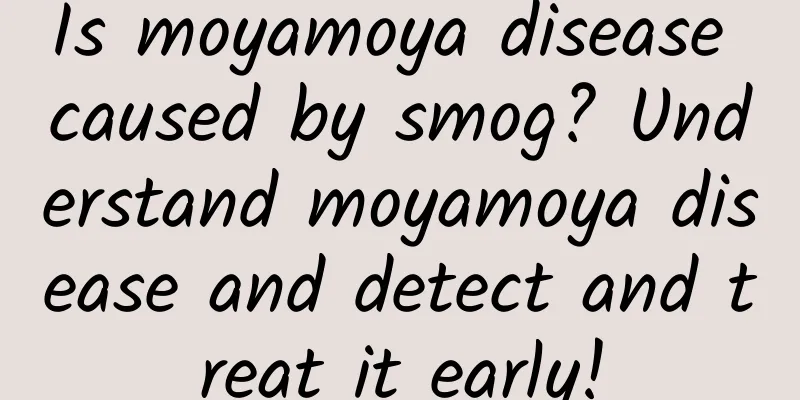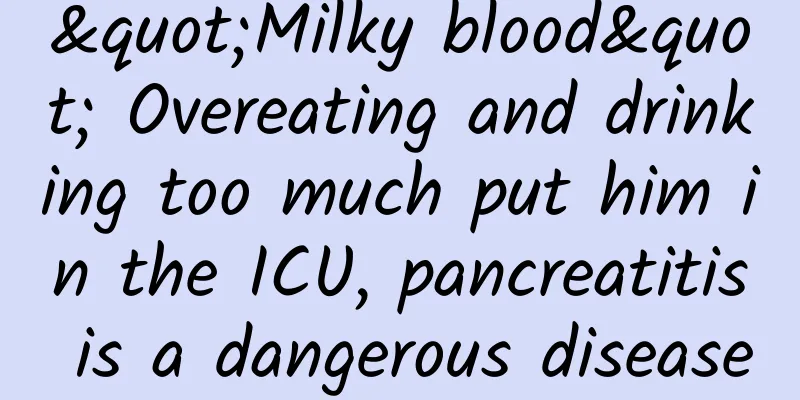Is moyamoya disease caused by smog? Understand moyamoya disease and detect and treat it early!

|
Author: Han Hongyan, Chief Physician of Aviation General Hospital Reviewer: Xu Jun, Chief Physician, Beijing Tiantan Hospital, Capital Medical University The bilateral internal carotid artery terminals and their main branches are progressively narrowed and even occluded. During the process of stenosis and occlusion of the internal carotid artery terminals, some arteries at the base of the brain will dilate compensatorily to replace the internal carotid artery to supply blood to the brain tissue. These dilated blood vessels appear like a cloud of smoke on cerebral angiography, and the Japanese named it moyamoya disease, which means smoke in Chinese, so it is translated into moyamoya disease. Figure 1 Original copyright image, no permission to reprint Moyamoya disease is not a disease caused by smoke, but a chronic cerebrovascular disease that can occur in people of all ages. There are two peak age groups for the disease, one is 5-10 years old, and the other is around 40 years old. 1. What factors are related to moyamoya disease? The cause of moyamoya disease is currently unclear, but there are some factors that may be considered to be related to moyamoya disease. First of all, it is genetic factors. It has been found that some moyamoya diseases are hereditary, and some gene fragments of moyamoya disease patients have changed, so the possibility of genetic factors is relatively high. Many moyamoya disease centers around the world are doing research in this area and have achieved certain results, but no conclusion has been reached. Some patients do not have any special genetic changes, but may have head and neck trauma, or intracranial infection, such as encephalitis or meningitis. Whether it is a bacterial infection or a viral infection, it may also lead to the occurrence of moyamoya disease. The above three factors are the ones that have been studied the most at present. They are related to genes, trauma, and infection. Some other factors are not very clear yet. 2. Which symptoms should alert you to moyamoya disease? In terms of clinical manifestations, most children with moyamoya disease present with ischemic symptoms, more than half of adult patients with moyamoya disease present with ischemia, and less than half will develop cerebral hemorrhage. Cerebral ischemia manifests itself as headaches, epileptic seizures, poor memory, and even cognitive impairment. If these symptoms are not taken seriously, severe cases may lead to cerebral infarction and cerebral hemorrhage. For example, if children often complain of headaches, they must go to the hospital for a check-up. If adults have long-term headaches, memory loss, or mental disorders without obvious causes, in addition to a plain MRI scan, they should also check their cerebral blood vessels and do a MRI angiography or CT angiography. Early detection and early treatment are very important. 3. How to treat moyamoya disease? Moyamoya disease often manifests itself as ischemic symptoms at the beginning, such as headache or poor memory. You can take some blood-activating and blood-stasis-removing drugs to improve blood supply to the brain. When taking drugs, you must pay attention to measuring blood pressure regularly to keep blood pressure not too high or too low. If blood pressure is too high, it may cause cerebral hemorrhage. The larger the dosage of blood-activating and blood-stasis-removing drugs, the lower the coagulation function and platelet function will be. Once bleeding occurs, the amount of bleeding will be large and the harm will be greater. Therefore, the use of blood-activating and blood-stasis-removing drugs to improve circulation should be appropriate. Drugs that promote blood circulation and remove blood stasis can improve blood supply to the brain and relieve symptoms, but they are not a treatment for moyamoya disease, and there is no drug to treat it. With the development of technology, the treatment of moyamoya disease is mainly surgical treatment, and the most important one is vascular reconstruction surgery. When the terminal of the internal carotid artery is narrowed and occluded, artificially building a vascular bypass from somewhere else to supply blood to the brain tissue, improve brain blood supply, and avoid cerebral infarction and cerebral hemorrhage is currently considered to be the best way to treat moyamoya disease. There are three types of vascular bypass surgery: indirect vascular bypass surgery, direct vascular bypass surgery, and a combination of direct and indirect surgery, called combined vascular bypass surgery. Indirect vascular bypass surgery is to place some tissue with vascular pedicles on the surface of the brain and let it stick together. Some of them can spontaneously form some blood vessels to supply blood to the brain tissue. It is also called patch surgery. Direct vascular bypass surgery is a vascular bypass that bridges the blood vessels on the scalp with the blood vessels in the brain tissue to directly supply blood to the brain tissue. Figure 2 Original copyright image, no permission to reprint Both indirect vascular bypass surgery and direct vascular bypass surgery have advantages and disadvantages. The biggest advantage of indirect vascular bypass surgery is that it is relatively simple to operate; the disadvantage is that indirect vascular bypass surgery requires at least three or four months because the blood vessels must form spontaneously. During these three or four months, it is equivalent to no treatment, and cerebral infarction or cerebral hemorrhage may occur. Most children who undergo indirect vascular bypass surgery can spontaneously form some blood vessels, but nearly half of adults cannot spontaneously form blood vessels. In addition, how to design a patch surgery to achieve better results requires certain experience. The advantage of direct vascular bypass surgery is that it is effective immediately after the operation. After the bridge is built, the blood supply to the brain can be improved immediately, and the symptoms will be improved immediately. The disadvantage is that the supply range is relatively limited when only one blood vessel is built. Secondly, the operation is difficult and not conducive to popularization. Moyamoya disease vascular bypass is much more difficult than general vascular bypass and coronary artery bypass. The operation is difficult to operate. Combined vascular bypass surgery will basically overcome the shortcomings of both patch surgery and bypass surgery, while combining the advantages of both. It is a current trend in the treatment of moyamoya disease. |
<<: The impact of periodontal disease is more than just tooth loss!
>>: Eyelid twitching may be a disease, don’t take it lightly!
Recommend
Can pregnant women eat watermelon when they have a cough?
It is said that pregnant women are the most beaut...
Why is aging called "old age and yellowing of beauty"? Can premature yellowing be avoided?
Once spring is over, the beauty will fade away. W...
How to check fallopian tube adhesion
Fallopian tube adhesion is very harmful to women ...
Menstrual cramping pain from anus to rectum
The twitching pain in the anus and rectum is due ...
What does a girl's egg look like?
Ovum is a substance discharged from the female bo...
Who is being slapped in the face by attributing the drastic decline in Hebei's epidemic to a "famous anti-epidemic prescription"?
From 0:00 to 24:00 on February 1, 2021, there wer...
What causes wrinkles? How can we effectively prevent wrinkles?
In the daily skin care and maintenance, women age...
What should I do if my skin is allergic to cosmetics?
Cosmetics are something that all female friends c...
What does cervical conization mean?
Cervical conization means cone-shaped removal of ...
Can grapefruit peel be eaten? What are the benefits of eating grapefruit peel?
As winter approaches, many people don't like ...
What medicine is effective for gynecological inflammation?
In daily life, gynecological inflammation caused ...
How to eat takeout in a healthy way? The ordering tips that workers must know
Fast pace of life Many friends sometimes need to ...
What should I do if I have endometritis?
If you have endometritis, you cannot ignore the i...









